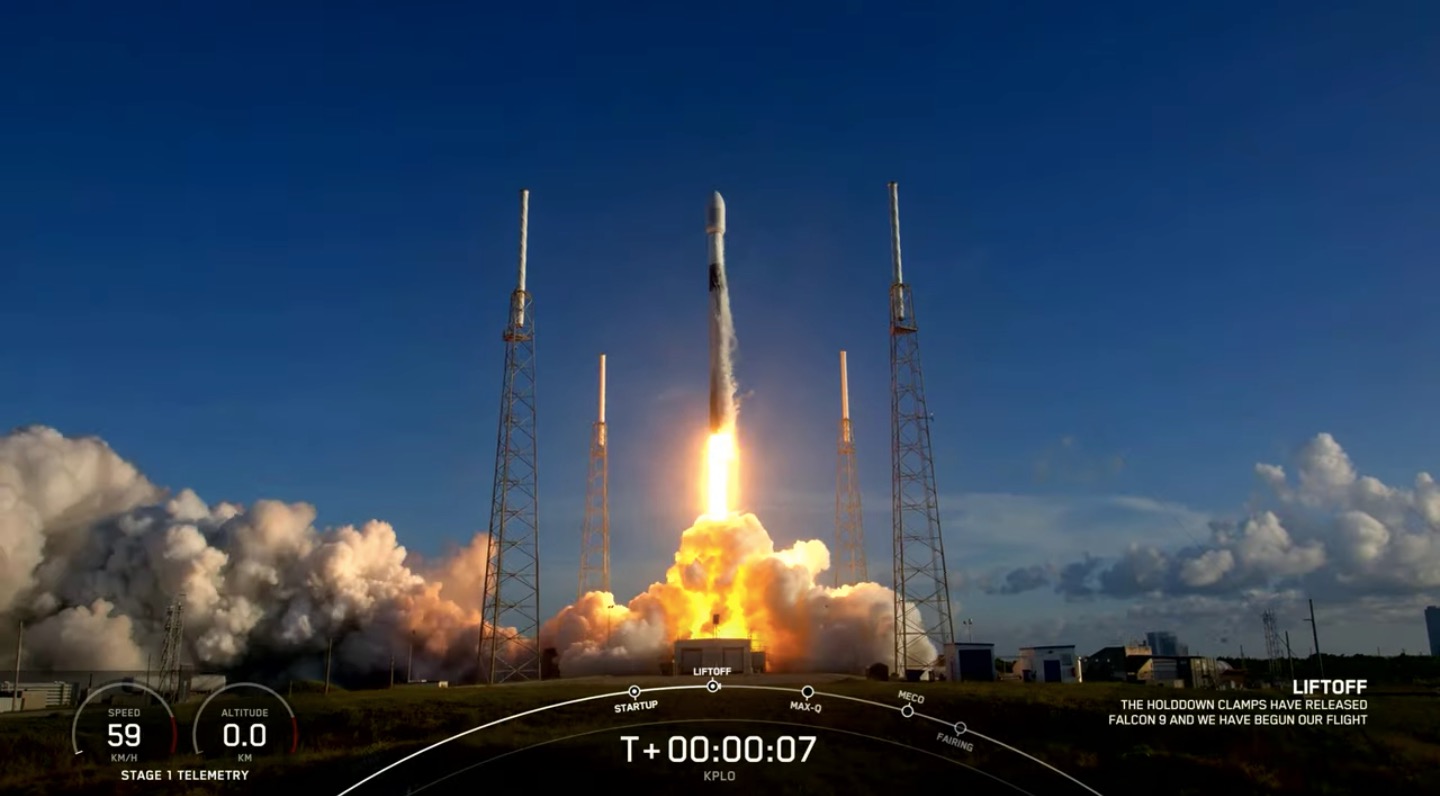SpaceX launches South Korea’s 1st-ever moon mission, lands rocket at sea

The Korea Pathfinder Lunar Orbiter (KPLO) lifted off today (Aug. 4) atop a SpaceX Falcon 9 rocket, kicking off South Korea’s first-ever deep-space mission and setting the stage for more ambitious moon efforts down the road.
KPLO, also known as Danuri, “will be the first step for ensuring and verifying [South Korea’s] capability of space exploration,” officials with the Korea Aerospace Research Institute (KARI), which is managing the mission, said in a statement (opens in new tab).
This first step will lead towards a robotic moon landing by 2030, if all goes according to plan — a milestone that will be huge for South Korea. “Lunar exploration will enhance the space technologies of Korea, increase the value of Korea and stimulate pride [in] Korean[s],” the KARI statement added.
The Falcon 9 rose off a pad at Florida’s Cape Canaveral Space Force Station today at 7:08 p.m. EDT (2308 GMT). The rocket’s two stages separated 2.5 minutes after launch and went their separate ways. The first stage came down for a pinpoint landing on the SpaceX droneship “Just Read the Instructions” nine minutes after liftoff. It was the sixth touchdown to date for the veteran booster, SpaceX said in a mission description (opens in new tab).
The second stage continued carrying KPLO into the sky, ultimately deploying the spacecraft into a ballistic lunar transfer orbit as planned 40 minutes after liftoff. But KPLO still has a long way to go; it will take a long, looping and very fuel-efficient route to the moon, finally slipping into lunar orbit in mid-December. That orbit will be circular and just 60 miles (100 kilometers) above the moon’s gray dirt.
KPLO’s lunar arrival will come about a month after that of NASA’s tiny CAPSTONE probe, which launched in late June and is taking a similarly circuitous path to Earth’s nearest neighbor.
A variety of scientific work
The $180 million KPLO mission is primarily about demonstrating technologies needed to reach and explore the moon, but Danuri (a portmanteau of two Korean words that mean “moon” and “enjoy”) will also do meaningful scientific work from its orbital perch.
The 1,495-pound (678 kilograms) spacecraft carries six scientific instruments, five of them homegrown and one, called ShadowCam, provided by NASA. This gear will gather a variety of data during a mission designed to last at least one year.
For example, Danuri sports a magnetometer, whose measurements could help scientists better understand the moon’s remnant magnetic field — in particular, the mysterious patches where that field is anomalously strong.
Danuri imagery will also help mission planners scout out good spots for South Korea’s future lunar landing mission, KARI officials said. And ShadowCam — which is based on, but much more sensitive than, the LROC camera system aboard NASA’s Lunar Reconnaissance Orbiter — will hunt for water ice in permanently shadowed lunar craters.
Those craters are thought to harbor lots of water ice, but the true extent and accessibility of that key resource are not well understood.
NASA’s involvement in KPLO extends beyond ShadowCam; The American space agency also selected nine researchers to participate in the mission.
“It’s fantastic that the Korea Aerospace Research Institute lunar mission has NASA as a partner in space exploration — we’re excited to see the new knowledge and opportunities that will arise from the KPLO mission as well as from future joint KARI-NASA activities,” KPLO project manager Sang-Ryool Lee said in a statement last year (opens in new tab), shortly after the nine participating scientists’ names were announced.
And the KARI-NASA collaboration could end up being extensive. NASA’s Artemis program is working to establish a permanent, sustainable human presence on and around the moon by 2030 and is therefore eager for data about the availability of lunar resources — data that ShadowCam and other Danuri instruments could provide.
South Korea is also a signatory to the Artemis Accords, a set of principles designed to facilitate the responsible exploration of the moon. South Korea signed the Accords in May 2021, becoming the 10th nation to do so. Eleven other countries have since followed suit.